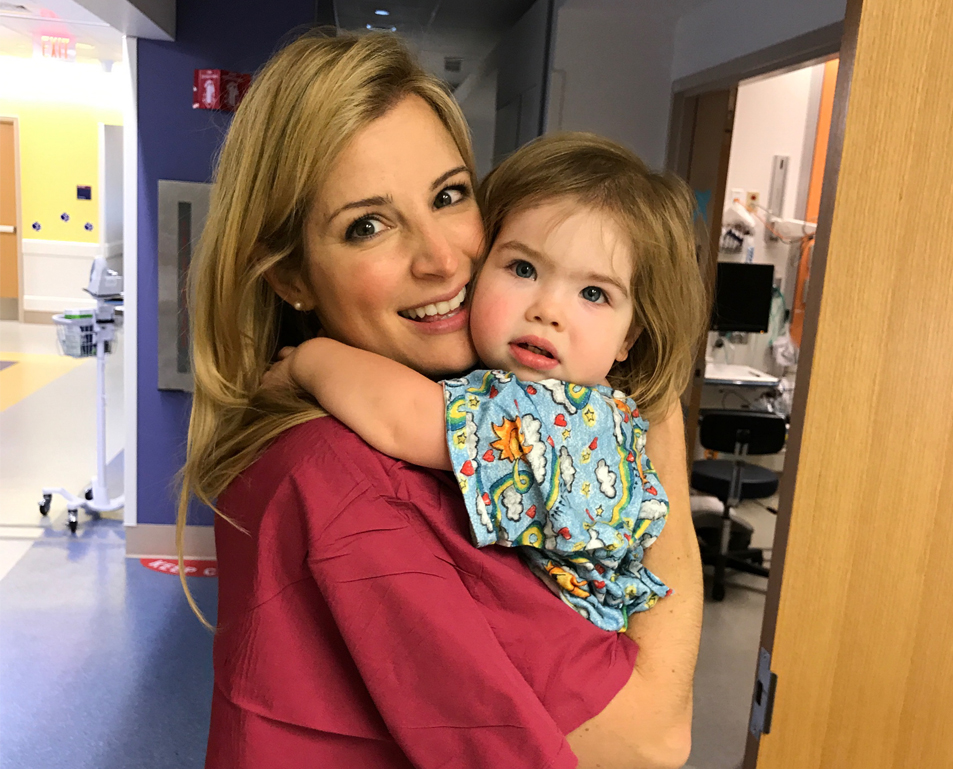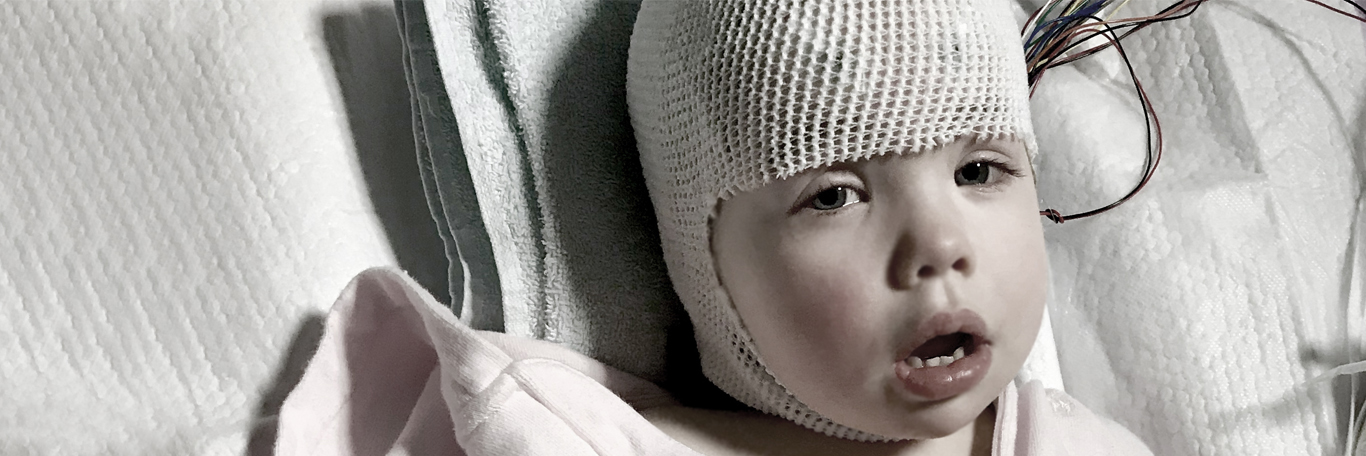
What is Alternating Hemiplegia of Childhood?
AHC is a neurological disorder caused by an ion imbalance in the brain that prevents the correct functioning of neurons. AHC affects one in a million people, and there are approximately 1,000 diagnosed cases in the world. Due to its rarity and its wide and varied phenotype, AHC is often misdiagnosed, most commonly as epilepsy. It is associated with devastating outcomes like death, brain atrophy, and sudden and permanent degeneration.
AHC is most frequently caused by a genetic mutation in the ATP1A3 gene, a gene that codes for the protein that is responsible for maintaining the critical electrochemical gradient in neurons in the brain. This protein is known as the “sodium-potassium pump”, or the Na+, K+ ATPase. Approximately 70% of AHC patients have a mutation in the ATP1A3 gene. Close to 100 disease-causing mutations of the ATP1A3 gene have been identified. Annabel’s specific mutation has been identified in only two other patients in the world.

What are the Symptoms of AHC?
For patients, AHC is like having seven conditions at one time:
- Paralysis like stroke. Patients experience debilitating periods of paralysis, which can last for over a week.
- Seizures and spells of reduced consciousness like epilepsy. These episodes carry a high risk of rapid, severe, and permanent deterioration. Clinical epilepsy occurs in more than 50% of AHC cases.
- Low muscle tone like cerebral palsy. Low tone contributes to other serious complications, including the inability to breathe and swallow properly.
- Movement problems like Parkinson’s. Patients often experience painful dystonia or involuntary muscle contractions.
- Neurodegeneration like Alzheimer’s. Brain atrophy can cause a decline in motor function, learning capacity, memory, and the ability to breathe, eat and swallow as patients reach adulthood.
- Behavioral issues like ADHD. Patients may also have behavioral issues driven in part by pain, frustration, fear and cognitive dysfunction.
- Learning challenges like autism. Patients can have cognitive challenges and difficulty with speech, learning, and psychological issues.


Is There a Treatment or a Cure?
To date, AHC research has identified unsophisticated drugs like calcium channel blockers and anti-anxiety medications that are only able to mask the symptoms, and not address the cause of the disease. There is unlikely ever to be a drug that rescues the dysfunction associated with all ATP1A3 mutations. Unless it is precise and patient-specific, it is highly unlikely that any drug can be designed to correct the dysfunction associated with all of the many mutations associated with our disease. There are simply too few patients, and too many mutations, to make it economically or practically viable.

Other Resources and Additional background
There are two AHC Patient Organizations in the US, and others all over the world. See www.CureAHC.org and www.AHCKids.org for more information.
A moving documentary, Human Timebombs, shows the painful experiences of AHC patients http://humantimebombs.com/

We Need Your Help
A donation now can change Annabel’s future, before it is too late.
Hope for Annabel, Inc. is a 501(c)(3) organization. All contributions are tax deductible. Please note that no gifts will be used for Annabel’s care or treatment.





